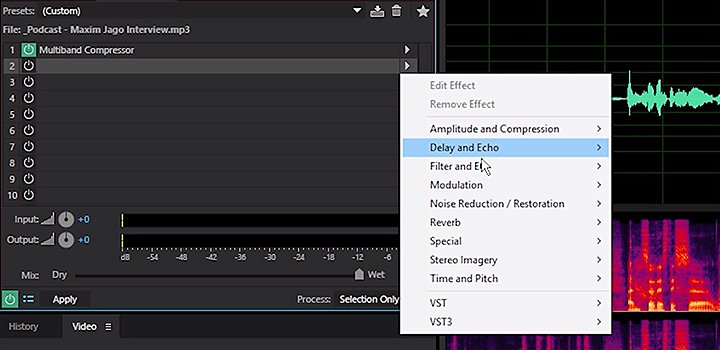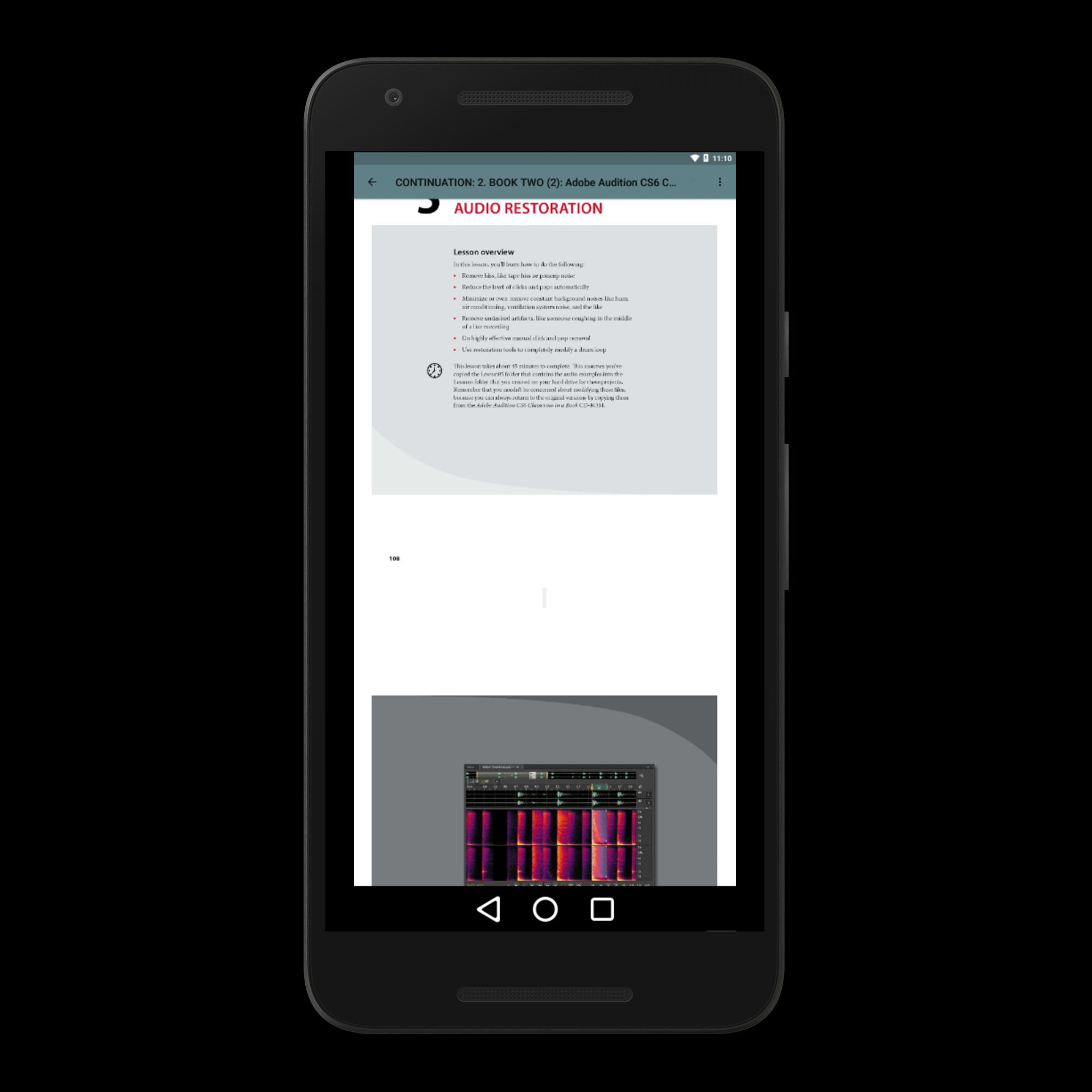With access to Audition, Adobe Photoshop, Adobe Spark Post, Adobe Illustrator, and Adobe Premiere Rush, you can create visuals and make complementary materials to promote your podcast. How to create a podcast. Get help creating and fine-tuning podcasts with these Audition sound editing tutorials. Adobe Audition Downloads. Adobe® Audition® software includes thousands of uncompressed, royalty-free audio sound effects and music loop files. These files have been grouped together by type and style into ZIP archives that can be downloaded using the links below. Sound Effects - 27 bundles, over 10,000 high-quality sound effects. Learn best practices for fixing audio in Audition using the Amplitude Statistics panel, spectral frequency display, adaptive noise reduction, Diagnostics panel, and DeClipper and DeHummer effects. To mimic a live broadcast you need to include a voiceover between tracks - With Adobe Audition you can record audio and add directly to your multitrack session. Open up a new file by clicking on 'Waveform', then File - New - Audio File. This brings up a new blank audio file for your recordings.
Integrate Adobe Audition into your post production workflow! Utilize Audition’s powerful tools for fixing common audio problems like background noise, hum, clipping, clicks and pops.
Adobe Audition can quickly clean up audio and fix problems that Premiere Pro cannot. In this post we cover common audio problems that you may encounter in your video editing and post production – and how to address these issues using the tools within Adobe Audition.
If you’re looking for tips on a Premiere Pro to Audition workflow, check out my previous posts on roundtripping your video editing clips and sequences into Audition and back to Premiere.
Noise Reduction in Audition
Adobe Audition has powerful noise reduction tools that be accessed in the Waveform Editor. If you are in a Multitrack Session, double click on a track to go into the Waveform Editor. Link app download.
Click and drag to select several seconds of background/ambient only sound. The more time you have to sample the better your results will be. Make sure you do not select any audio with voices or other noises!
Go to Effects > Noise Reduction (process). Click “Capture Noise Print” and then “Select Entire File”.
Click “Noise Only” to hear what you are removing (deselect it before you click apply). Click the green button on & off to toggle the effect as you adjust the “Noise Reduction” & “Reduce by” sliders.
If you prefer shortcuts, use Shift +P to save a noise print and CMD/CNTRL/Shift + P to open the “Noise Reduction” Effect. I suggest making shortcuts for effects you commonly use (do this by accessing the shortcut editor in the menu bar, Edit >Keyboard Shortcuts).
Adaptive Noise Reduction
Adaptive Noise Reduction automatically learns what noise is, as long as you have background noise before people start speaking. To take advantage of this tool, it is a good habit to always record 4-5 seconds of audio before your talent starts speaking.
In Adobe Audition, you can also combine Adaptive Noise Redution with other effects in the Effects Rack (which you can’t do with standard Noise Reduction). It is part of several presets like “Clean up and Level Voice-Over” that can help you get started if you are new to audio effects.
Remove Hum in Audition
This Adobe Audition effect comes in handy if you are doing a lot of location filming where you can’t control the production environment.

Use this to remove AC hum (lights, power lines, electronics). In my example I was picking up hum from an Xbox 360 in the room.
Go to Effects > Noise Reduction/Restoration > Dehummer. Select your preset based on country. I’m in the states so I picked 60Hz.
Auto Heal & Spot Healing
You can use Auto Heal & the Spot Healing Brush to remove clicks, pops, and other short noises you want to remove from your audio.
Zoom in by pressing the plus key and select the pop. Right click and select “Auto Heal” (Comm/Control + U).
You can also paint a selection with the spot healing brush(B) by dragging over the area to fix in the “Spectral Frequency” display.
Using the Diagnostic Panel
Access the Diagnostics panel in Audition by choosing Window > Diagnostics from the menu bar. The powerful diagnostic panel provides tools to fix clipping, clicks and pops in your audio.
The Declipper is handy for repairing clipped audio. Select the DeClipper Effect in the Diagnostic panel. Click Scan and your clipping areas will be listed. Select a listed problem to move to it in the waveform.
You can fix each one at a time or click Repair All.
Note: Depending on your audio it may still appear clipped, as Audition works in 32 bit floating point. Decrease the amplitude or use Normalize to see that the audio isn’t actually clipped. I have had varied results with the DeClicker, so if it dozen’t fix your issues, you the manual method mentioned above using Auto Heal & Spot Healing Brush.
Before:
After:
Utilize a Premiere to Audition workflow to take advantage of these great audio tools in your video editing projects. For more details on working with audio in Adobe Audition see Adobe Help.
Step 1: download & Install Virtual Audio Cable
from here https://vb-audio.com/Cable/
understanding VB cable settings
virtual audio cable:
Output = input or recording
input = playback
sound goes to output to >> input >> another hardware. (skype,)

Step 2: Configure sound settings on windows
Playback device: plays sound
Recording device:records
Recording device audio quality settings available at advance tab.
cross check match with input hardware device.
Step 3: Configuration at Adobe Audition
a. Adobe audio hardware properties
input device: actual hardware
output: virtual cable input default
default & master will be same.
microphone input >>Audition>>VB cable output>>
cable input >>at obs

In Multitrack session:
Select Mixer
Input device:
stereo: real input device usb audio codec
output: stereo >> cable input virtual Audio cable VB
Step 2:
Then Select R for Record
Then select I for Monitor
Monitor outputs sound vb cable.
vb cable as a input hardware for obs.
processed audio will come to OBS.
OBS Itself good for audio processing but audacity at professional level.
Troubleshooting
Two Different audio qualities not works together
my case: 16 bit mono 48k for input device
Adobe Audition Course

VB has setting for 24bit something not worked , so i changed to 16 bit 1 channel usually mics have only one 1 channel.
audio quality should be same
16 bit dvd or whatever the actually input hardproprties.
otherwise voice lose quality for editing.
just like compressing image.
16 bit 48K
Adobe Audition Live Playback
Related topics:
